Discover 9 hidden attractions, cool sights, and unusual things to do in Welwyn Garden City (United Kingdom). Don't miss out on these must-see attractions: Stanborough Park, Sherrardspark Wood, and Digswell Viaduct. Also, be sure to include Stanborough Reedmarsh in your itinerary.
Below, you can find the list of the most amazing places you should visit in Welwyn Garden City (England).
Table of Contents
Stanborough Park
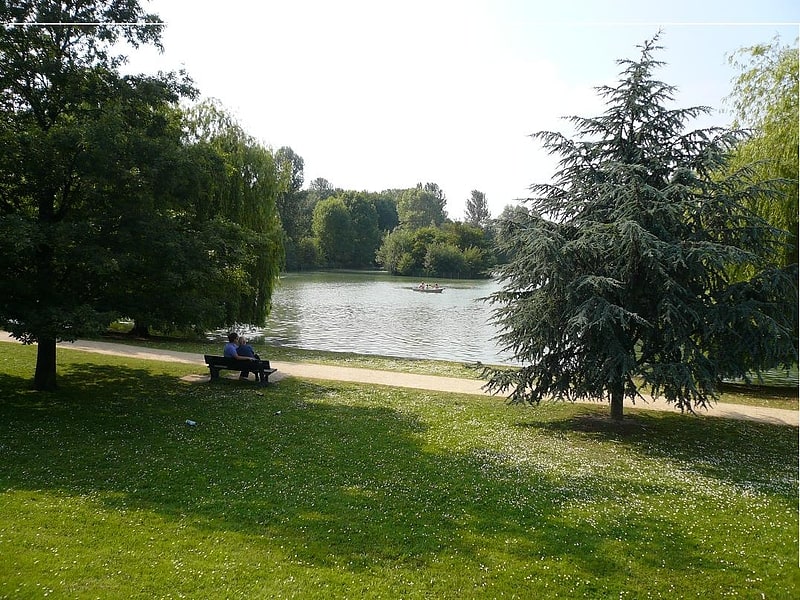
Park in Welwyn Garden City, England. Stanborough Park, also referred to as Stanborough Lakes is a 126-acre park in Welwyn Garden City, Hertfordshire, England.
The park features two lakes, which were opened more recently in 1970. They are man-made and were built as a result of gravel extraction at the time of the building of the A1(M) motorway, although the thought of a riverside park had been considered since the city's Master Plan of 1949. The whole park is completely man-made from an old quarry site creating the lakes and the hills around them.
The Boating Lake (the northern lake) at Stanborough is 11.3 acres (46,000 m2) in size. It is a shallow lake, under three feet in depth with several small islands. The boating lake is fed by water from the River Lea at its north end and from a spring. Excess water flows over a weir back into the river at the south end. Coarse fish such as carp are bred in the boating lake and fishing is banned here. Rowing boats are available to hire at only £7.50. The boating lake also sells ice-creams, chocolate bars, fizzy drinks, fishing nets, hot drinks, duck food and more.
The Sailing Lake (the southern lake) is 15.3 acres (62,000 m2) in size. This lake has no islands but is deeper than the boating lake, more than six and a half feet deep in places. Unlike the Boating Lake the Sailing Lake is ground water fed. Before the lakes were built the River Lea used to flow through part of the Sailing Lake but it was re-directed to the west side. Many watersport activities take place here, including sailing, windsurfing and angling.
At the south end of the park there is access to Stanborough Reedmarsh, a Local Nature Reserve managed by the Herts and Middlesex Wildlife Trust.
In November 2008, several hundred Lombardy Poplar trees in the South Car Park were chopped down by Welwyn Hatfield Borough Council despite widespread local protest.[1]
Address: Stanborough Road, AL8 6DF Welwyn Garden City
Sherrardspark Wood
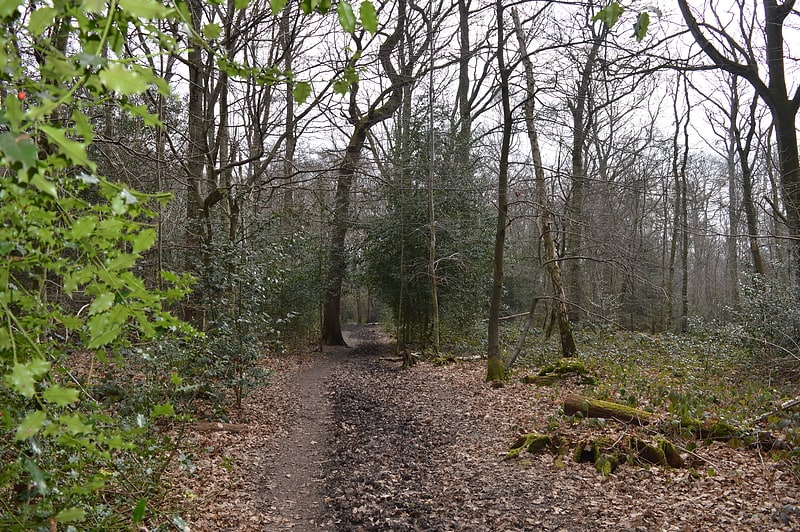
Sherrardspark Wood is a 74.9 hectare biological site of Special Scientific Interest in Welwyn Garden City, Hertfordshire. The site was notified in 1986 under the Wildlife and Countryside Act 1981.
There are a number of walks through the wood, one of which follows the disused Luton/Dunstable branch line from Welwyn Garden City railway station. This line closed in the 1970s and runs from the White Bridge on Digswell Road west and then north to the Great North Road next to the A1(M) motorway, close to the Red Lion pub. The trail continues from Ayot St Peter on the other side of the motorway along Ayot Greenway.
Sherrardspark Wood is in the north west of Welwyn Garden City and is an ancient woodland consisting mainly of Sessile oak and hornbeam. It is used by dog walkers, joggers, cyclists, and horse riders. The area was designated by English Nature a Site of Special Scientific Interest in 1986 as well as a Local Nature Reserve in 1998. The Sherrardspark Wood Wardens' Society assists with the maintenance of the wood.[2]
Digswell Viaduct

Historical landmark in Welwyn, England. The Digswell Viaduct, also called Welwyn Viaduct, is a railway viaduct that carries the East Coast Main Line over the River Mimram in the county of Hertfordshire in England. A prominent local landmark, it is located between Welwyn Garden City and Digswell. It is just to the south of Welwyn North railway station.
The viaduct, of 40 arches, is a Grade II* listed structure. It was the longest and tallest viaduct on the Great Northern Railway's route.
The viaduct is around 1,560 feet (475 m) long and comprises forty arches of 30 ft (9 m) span, and it is 100 ft (30 m) high from ground level to trackbed. It is built of red brick fired from clay quarried on site during construction, and took two years to build, including the construction of embankments at both ends which required the movement of around one million tons of earth by human and horse power. It was designed by William Cubitt and styled after a Roman aqueduct.
It has been claimed that it was officially opened by Queen Victoria on 6 August 1850, but she was reportedly so frightened of its height that she refused to travel across it and left the train, using a horse-drawn carriage to travel the length of the bridge on the ground. However, her published diaries for that day show that she was staying at Osborne House on the Isle of Wight at the time.
The viaduct carries the East Coast Main Line, which has to narrow from four tracks to two to cross the viaduct, making it a bottleneck restraining capacity over this strategic transport route. This problem is exacerbated by Welwyn North railway station situated at the northern end of the viaduct, which blocks the line while trains are stationary, and by two tunnels to the north. Several ideas to overcome the limitations of the viaduct and station without damaging the viaduct's essential historic character and rhythmic design are periodically discussed.
A three-year project in the mid 1930s encased the viaduct's deteriorating brickwork in the blue engineering brick seen today. Overhead lines were added when the line was electrified in the 1970s.[3]
Stanborough Reedmarsh
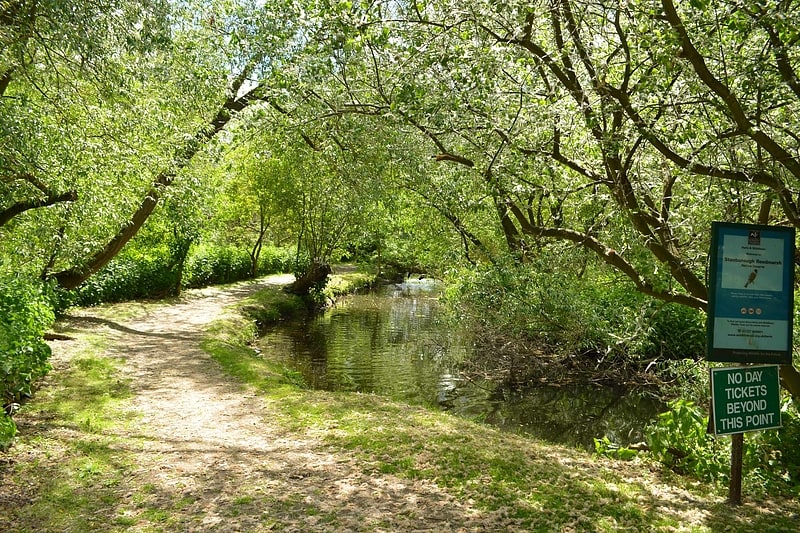
Stanborough Reedmarsh is a 3.3 hectare Local Nature Reserve in Welwyn Garden City in Hertfordshire. It is owned by Welwyn Hatfield Borough Council and managed by the Herts and Middlesex Wildlife Trust.
The site is wet willow woodland on the bank of the River Lea. It is important for water voles and birds such as reed and sedge warblers. Water figwort, common meadow rue and water chickweed grow along the river bank.
There is access to the site from Stanborough Road through Stanborough Park.[4]
New Maynard Gallery

Art gallery, Shopping, Museum
Address: The Campus, AL8 6BX Hatfield
Weston Hills
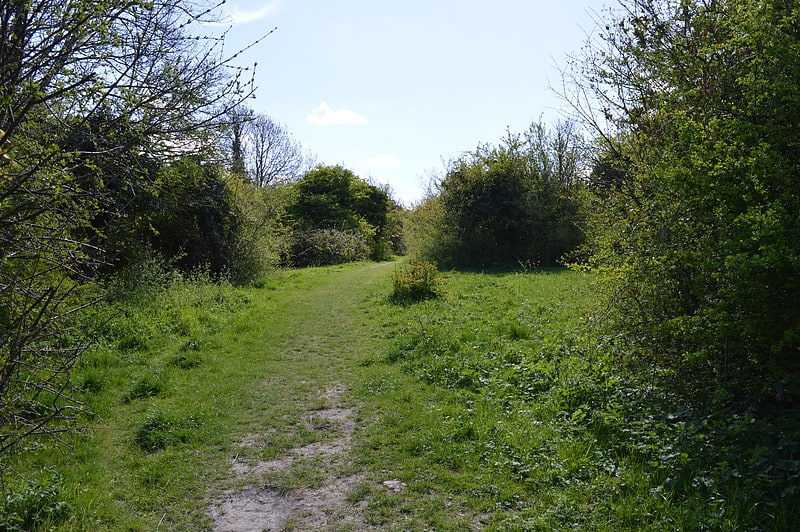
Weston Hills is a 17 hectare Local Nature Reserve in Baldock in North Hertfordshire. It is owned by Hertfordshire County Council and North Hertfordshire District Council and managed by NHDC.
The site has grassland, woodland and mixed scrub. Six hectares is chalk grassland, and this is its most important ecological feature and one of the best examples in Hertfordshire; plants are very diverse because the harsh conditions do not allow vigorous species to become dominant. Plants include autumn gentian, clustered bellflower, harebell and six species of orchid. There are slowworms, common lizards and many species of butterfly. Some chalk quarries date back to the Roman period, and there are also ancient earthworks.
There is access from Chiltern Road, Ivel Way and Limekiln Lane, and from the Icknield Way Path.[5]
Wheathampstead Local Nature Reserve
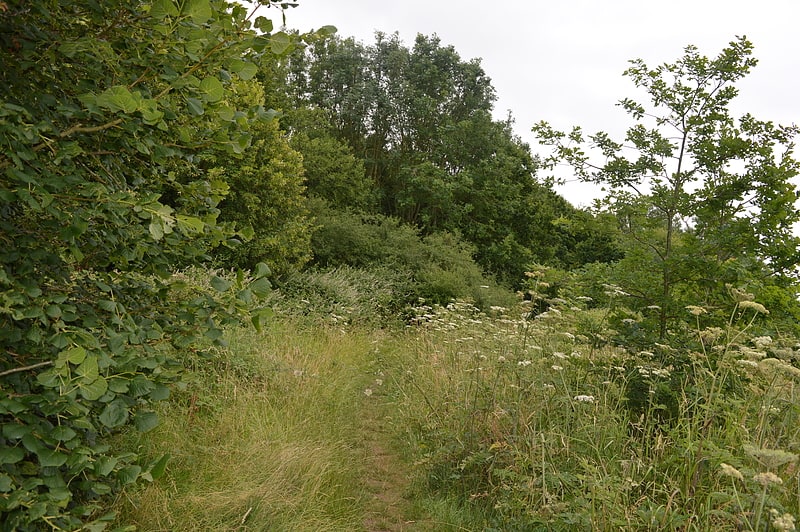
Wheathampstead Local Nature Reserve is a 5.9 hectare Local Nature Reserve in Wheathampstead in Hertfordshire. It was declared an LNR by St Albans City Council in 2002, and is leased by Wheathampstead Parish Council from Hertfordshire County Council.
The L shaped site borders football pitches. There is ash woodland, thorn scrub and mature hedgerows, together with an area of rough grassland. There are birds such as grass vetchling and bee orchid, birds including yellowhammer and whitethroat, and many butterflies.
There is access from the Wheathampstead Development Centre and by a gate on the B651 south of Butterfield Road.[6]
Welwyn Hatfield Borough Council
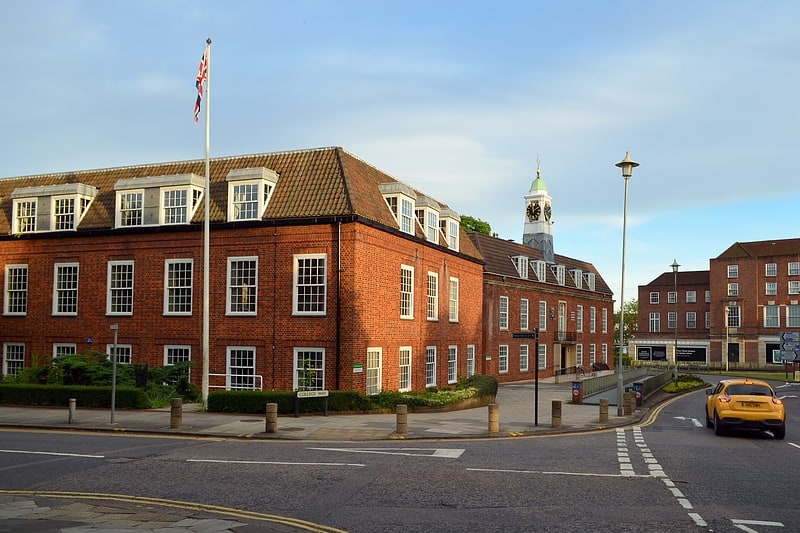
Council in Welwyn Garden City, England. Welwyn Hatfield Borough Council is the local authority for the Welwyn Hatfield non-metropolitan district of England, the United Kingdom. Welwyn Hatfield is located in the centre of Hertfordshire, in the East of England region. The Council itself is based in Welwyn Garden City, the largest settlement in the district.
The Council consists of 48 elected members, representing sixteen electoral wards, all of which elect three councillors.
After the 2021 election the council is controlled by the Conservatives, who hold 28, or 58%, of the 48 seats. The Liberal Democrats hold eleven seats, and Labour hold three seats.[7]
Lemsford Springs
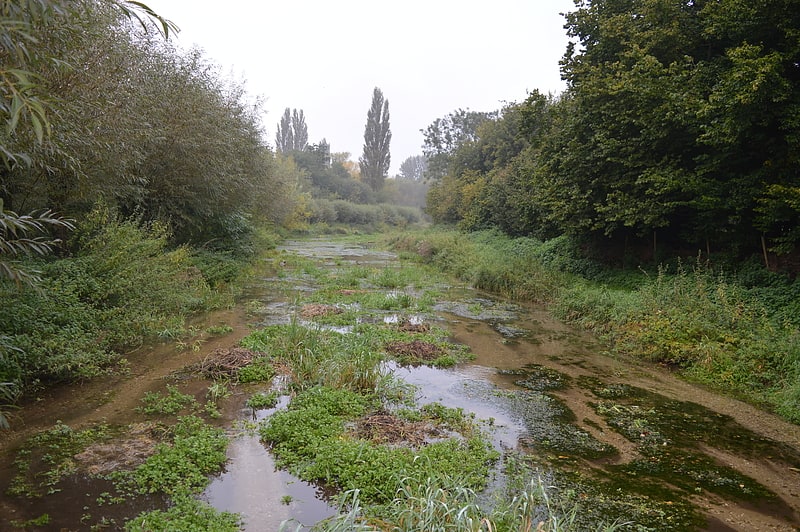
Nature preserve in Lemsford, England. Lemsford Springs is a 4 hectare nature reserve in Lemsford, Hertfordshire, England. It is managed by the Herts and Middlesex Wildlife Trust, which purchased the site in 1970. Notable for its lagoons, the site is in the Lea valley and its other habitats are meadow, hedgerows, marsh and willow woodland.
Before becoming a nature reserve, the site was used as a watercress bed. Its lagoons are fed by springs, so they never freeze over and provide an important habitat for birds in cold winters. There are two bird hides, and birds which can be seen include water rails, snipe and green sandpipers. Green sandpipers are migratory; a colour ringing project has revealed information about the travels of the Lemsford population including their breeding sites in Scandinavia.
There are also water shrews and around fifty species of water snails.
The reserve is kept locked and access can be arranged with the Wildlife Trust warden.[8]